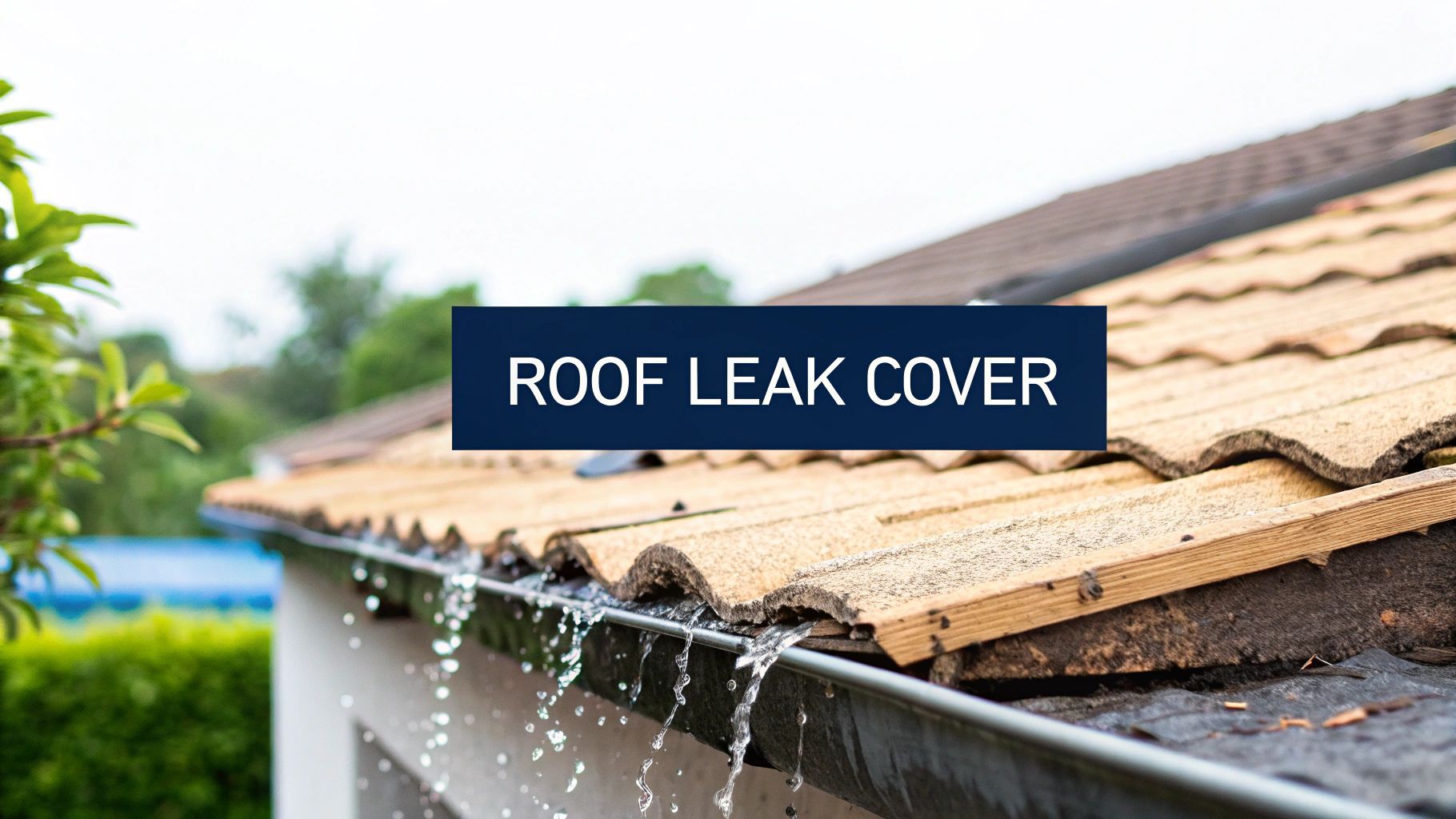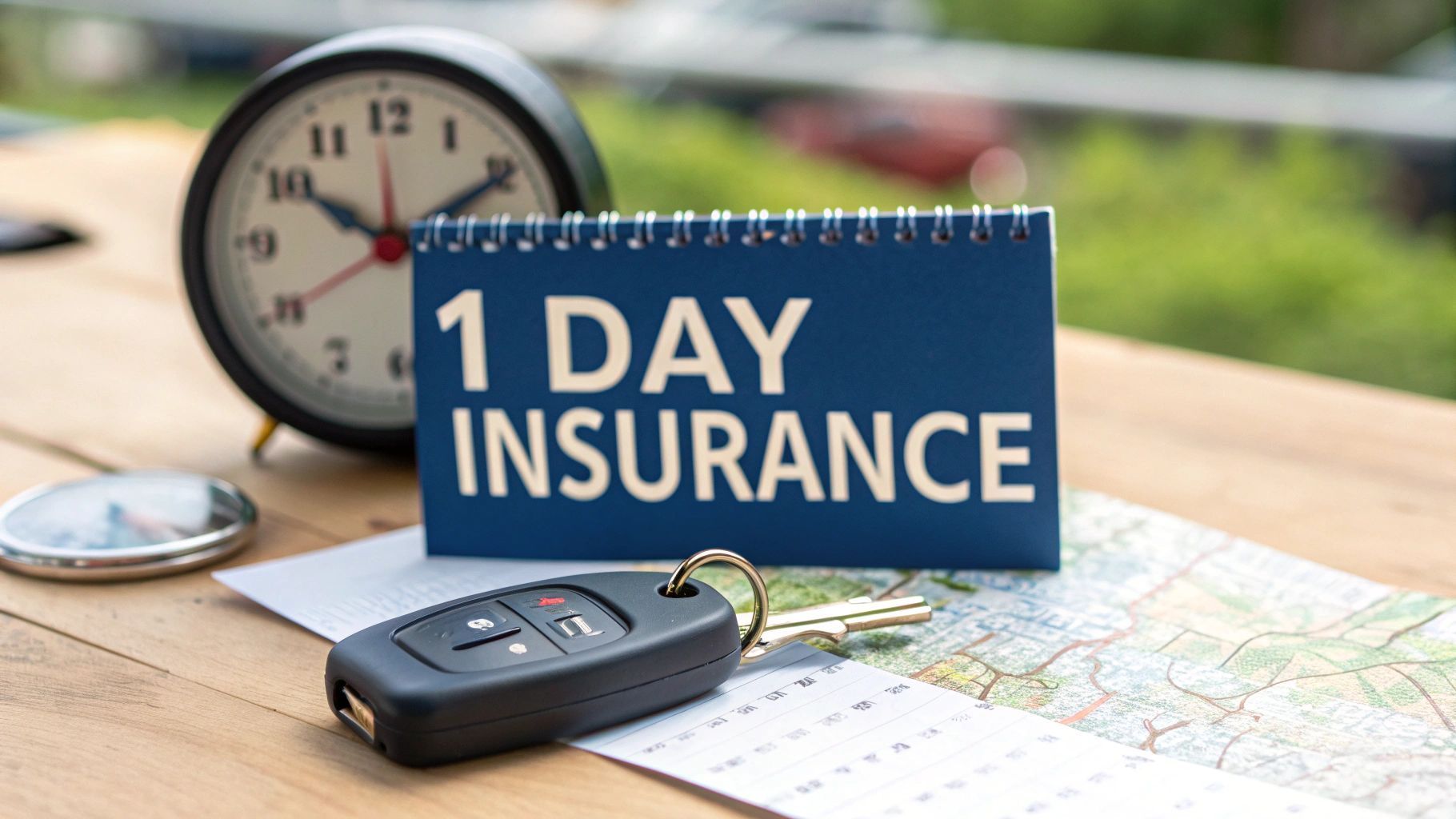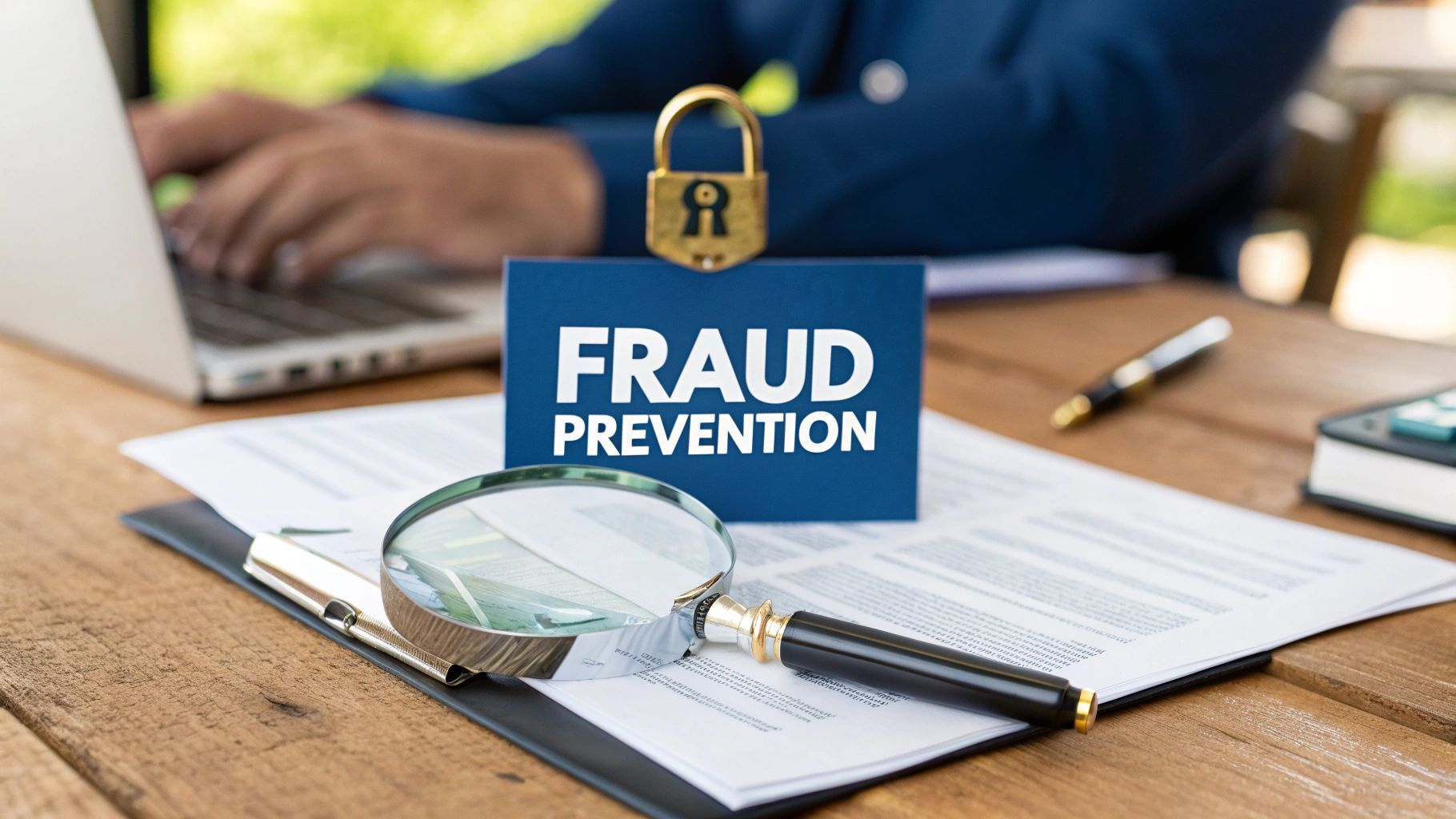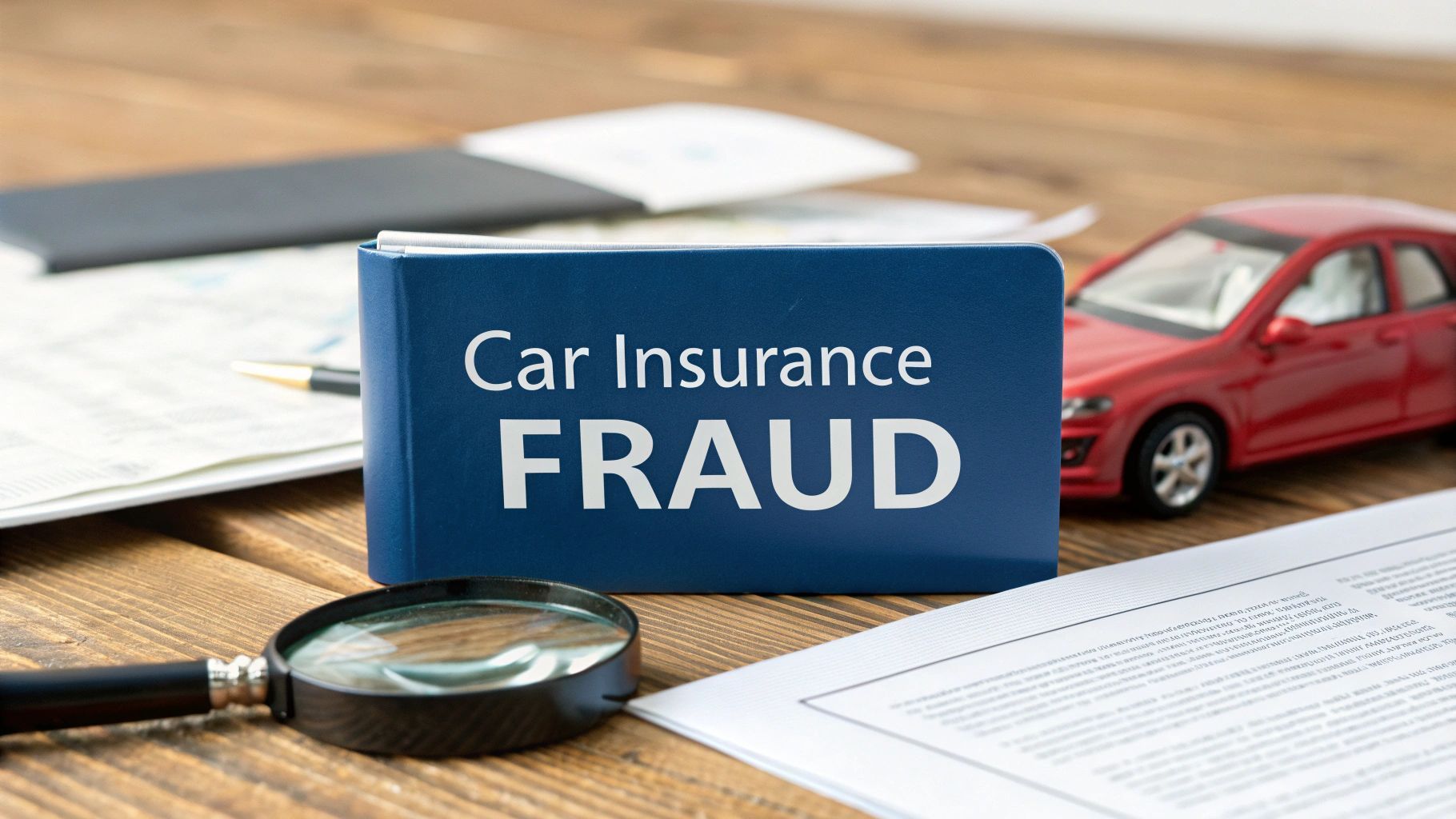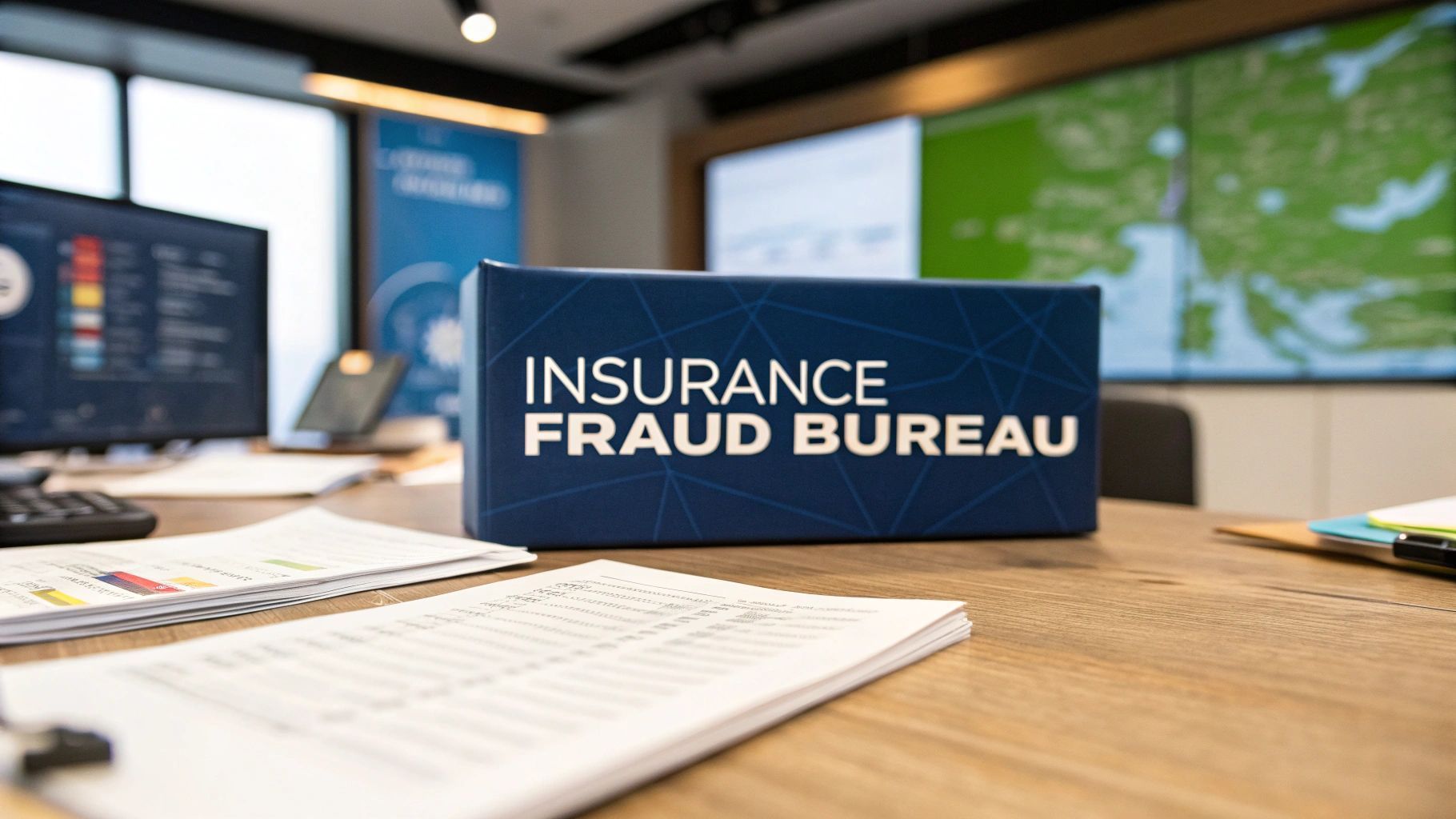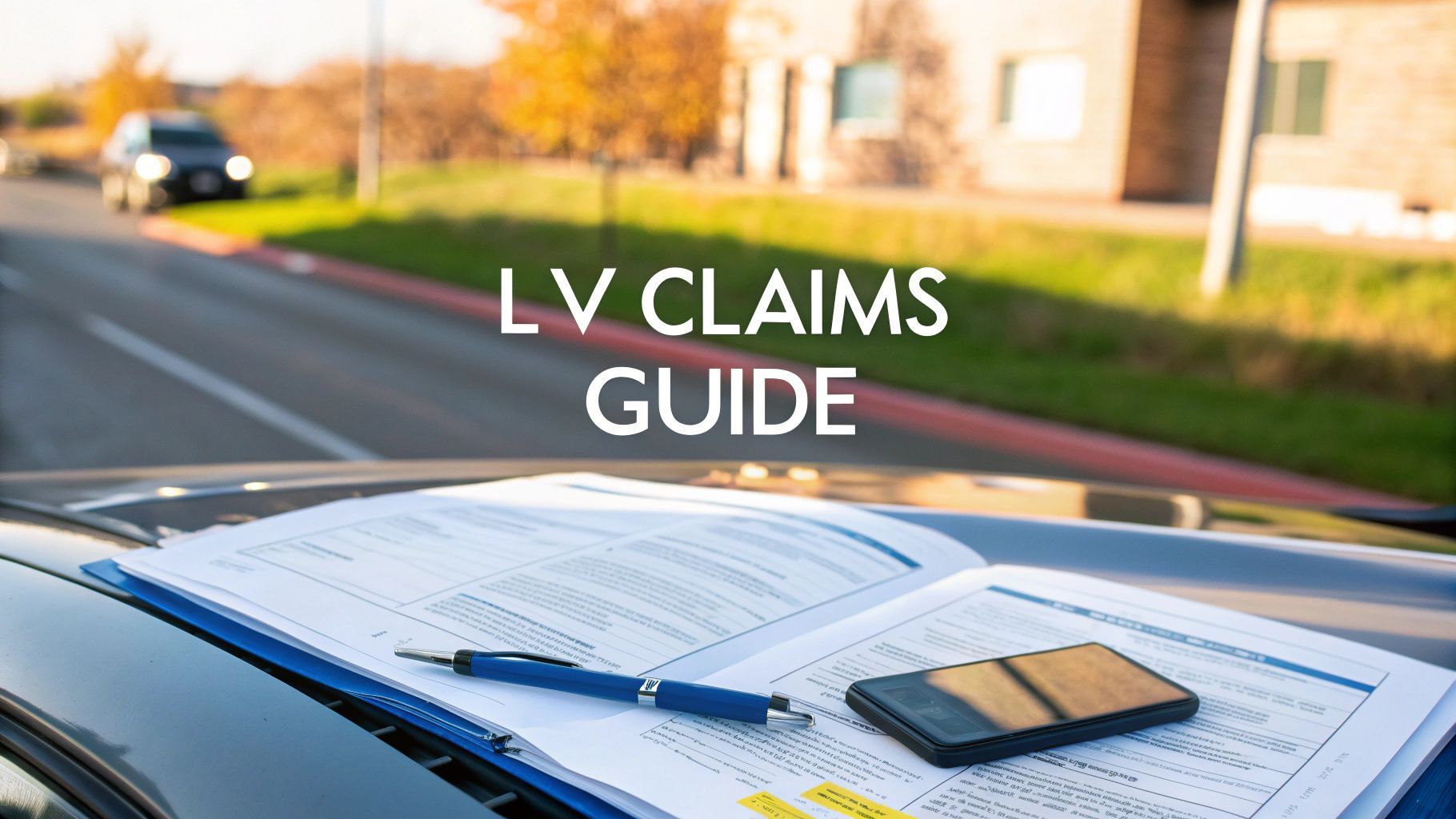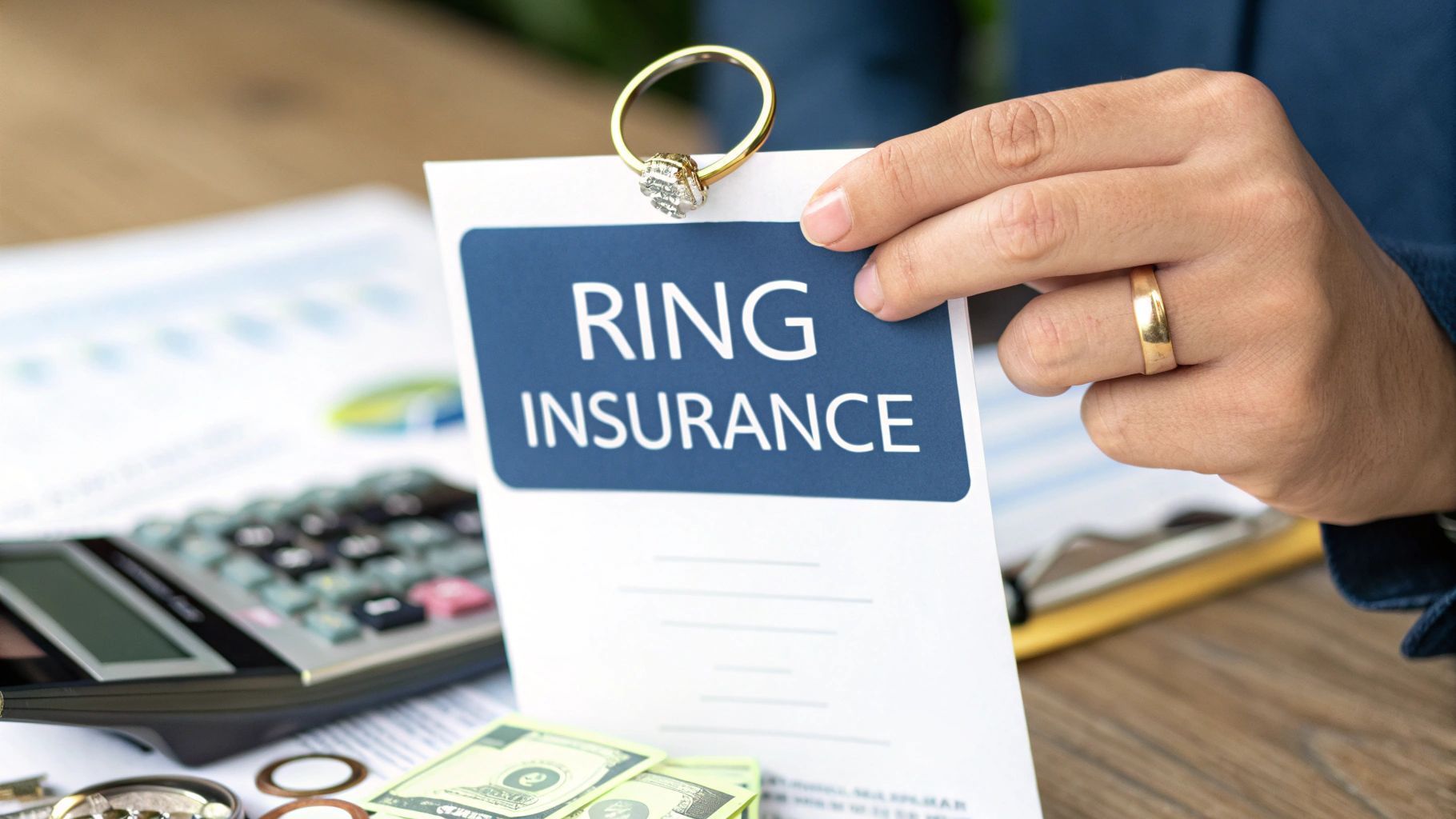Insurance Engagement Ring UK: Your Essential Guide to Protection
An engagement ring is not just a piece of jewellery; it is a huge financial commitment and a symbol of your future. That is why getting the right insurance for your engagement ring in the UK is not a luxury—it is an essential step to protect it from loss, theft or damage. It is all about peace of mind.
Why Engagement Ring Insurance Is a Necessity
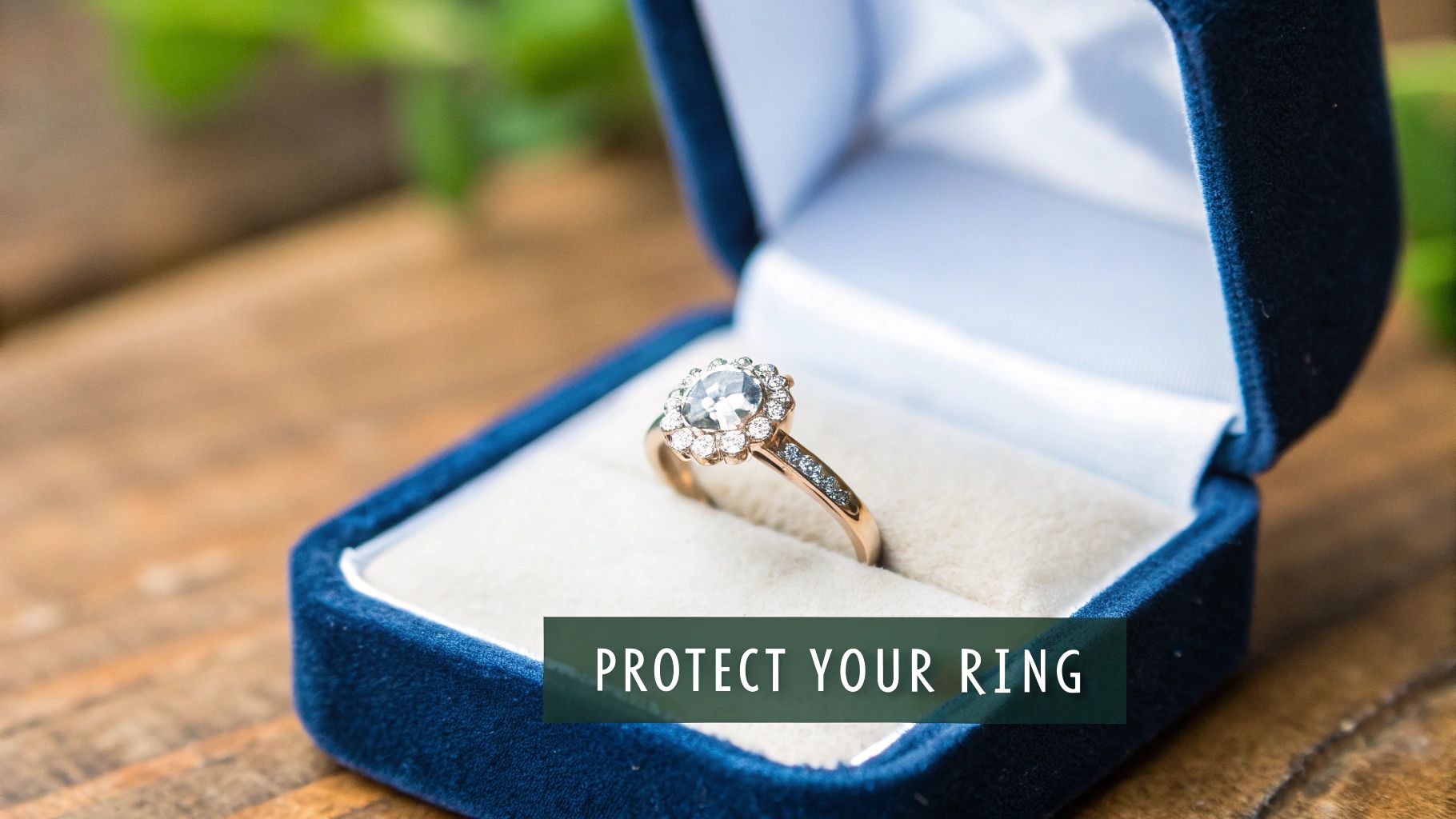
Sure, an engagement ring holds immense sentimental value but let us be practical for a moment. It is also a small, portable, high-value asset that you wear every single day. The risks are very real—losing it down a drain, leaving it behind at the gym or worse, becoming a target for theft.
Without dedicated insurance, you would be left to cover the full cost of replacing an item that likely cost thousands of pounds. Thinking of insurance as a necessity, not an optional extra, provides a crucial financial safety net.
The Problem of Provability and Fraud
Insurers are more focused than ever on the provability of claims. It is a simple but critical question: can you prove, without a shadow of a doubt, that you owned the specific ring for which you are now claiming? This is not about making life difficult for honest customers; it is about tackling a very real problem.
Insurance fraud is far from a victimless crime. It hits the industry hard and the cost eventually trickles down to every single policyholder, affecting us all.
When fraudulent claims are paid out, insurers must recover those losses somewhere. They do this by increasing premiums for everyone, meaning your policy costs more because of someone else's dishonesty. This widespread impact is a significant cost to both consumers and the industry itself.
This is exactly why keeping meticulous records from day one is so important.
Your Roadmap for Proper Protection
To get the right cover, you need a clear plan. This guide is here to walk you through the non-negotiable steps for insuring an engagement ring in the UK, making sure you are not underinsured or paying for cover you do not actually need.
Here is what you absolutely need to get right:
- An Accurate Valuation: A simple shop receipt just will not cut it. A professional valuation gives an insurer the detailed evidence it needs to confirm the ring's true replacement value.
- Choosing the Right Cover: You have got options. You can add the ring to your home contents policy or go with a specialist jewellery provider. Each path has its own pros and cons.
- Proving You Own It: This is vital. Securely documenting your ring with photos, receipts and valuation certificates is the key to a smooth claims process and helps fight industry-wide fraud.
By getting a handle on these key areas, you can confidently protect one of the most precious things you will ever own.
Getting an Accurate Jewellery Valuation
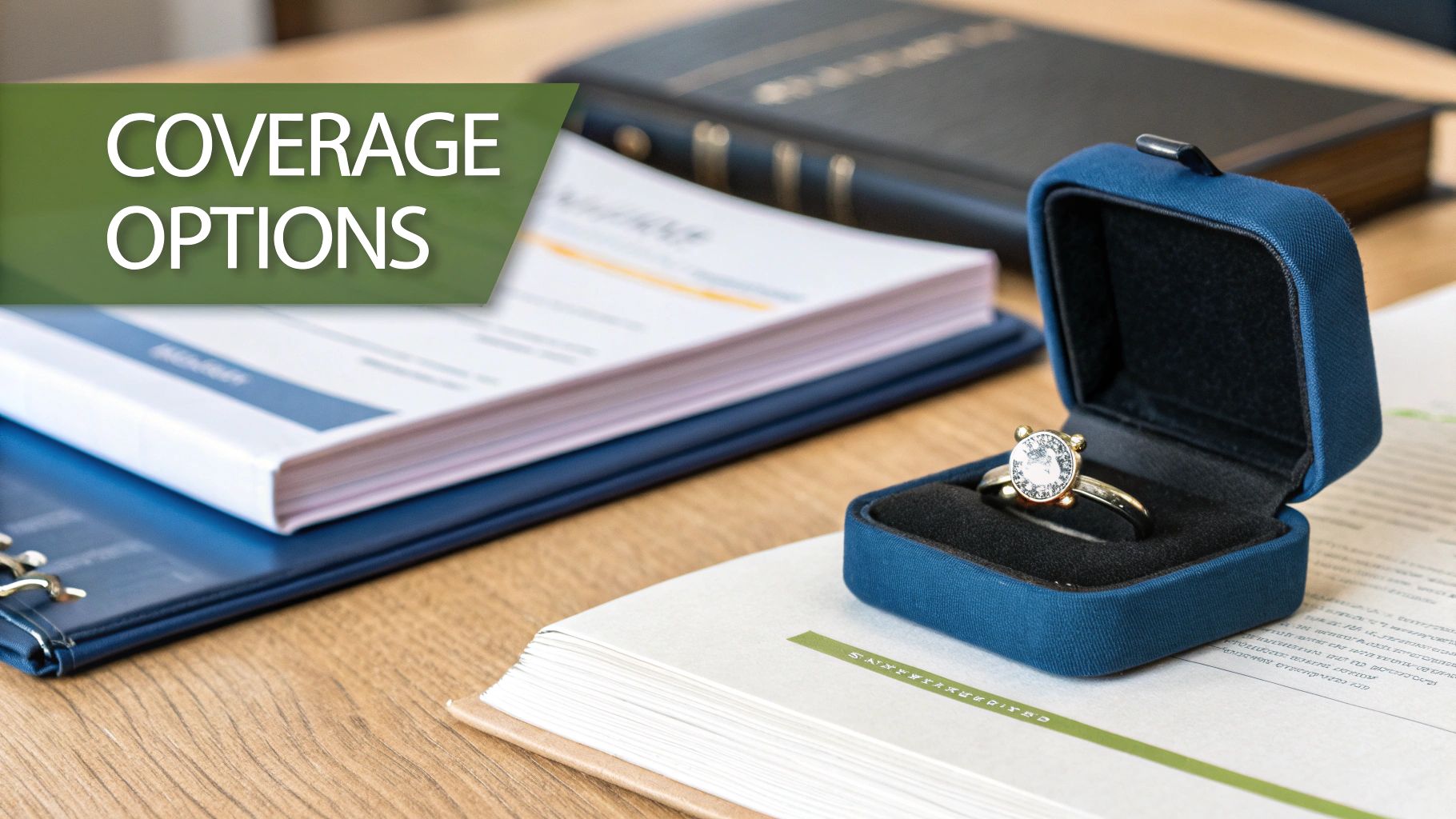
Before any insurer can offer you cover, they need to know exactly what they are protecting. This is where a formal jewellery valuation comes in and it is non-negotiable. Think of it as the bedrock of your policy, establishing the official replacement value of the ring.
You might assume the receipt from the jeweller will do the trick but it almost never does. A receipt shows what you paid, which is often very different from its current retail replacement value. This replacement cost is the figure an insurer needs to calculate your premium and crucially, to source a like-for-like ring if you ever have to make a claim.
The original purchase price does not factor in shifts in the market, the cost of craftsmanship or the tiny details needed to recreate an identical piece. That information gap is a real risk for everyone involved.
What a Formal Valuation Must Include
A proper valuation is not just a number on a piece of paper. It is a detailed dossier on your ring, providing the concrete evidence an insurer needs. It is essentially the ring's passport, containing all its vital stats.
For a valuation to be accepted by most UK insurers, it has to be thorough and professional. It should always include:
- Detailed Stone Specifications: This means covering the "4 Cs"— carat , colour , clarity and cut —for every diamond or main gemstone. If it is a lab-grown diamond, the valuation must legally state its origin.
- Metal Description: The type of metal (e.g., 18ct white gold , platinum ), its weight and any hallmarks need to be clearly noted down.
- High-Quality Photographs: Clear, high-resolution images from several angles are essential. They act as visual proof of the ring’s design, condition and unique features.
- The Replacement Value: The document will state the final value, which is the cost to replace the ring with a new, identical one from a retail jeweller today.
This level of detail is not about bureaucracy; it is about provability. A comprehensive valuation removes any guesswork and ensures that if a claim is made, the process is based on verified facts. This precision also helps combat fraudulent claims, which ultimately helps keep premiums stable for all policyholders.
Finding a Registered Valuer and Staying Current
To make sure the valuation is credible, you must use a qualified and registered professional. In the UK, that means looking for an expert associated with a body like the National Association of Jewellers (NAJ) or The Guild of Valuers & Jewellers. These organisations hold their members to strict standards, giving their valuations the authority insurers trust.
Finally, remember that a valuation is not a one-and-done task. The values of precious metals and gemstones fluctuate. Gold prices can soar in just a couple of years, which could leave you seriously underinsured if your valuation is out of date.
It is a smart move to have your engagement ring re-valued every two to three years . This keeps your insurance cover in line with the market, guaranteeing you have enough protection to get a true like-for-like replacement if the unthinkable happens. It is a small, regular effort that provides lasting peace of mind.
Choosing Your Insurance: Home Contents or Specialist Cover
With your ring's official valuation in hand, you have reached a fork in the road. Should you add it to your existing home contents insurance or is it better to take out a separate, specialist policy? Each route has its own set of pros and cons and the right choice really depends on the ring itself and your personal circumstances.
The quickest path for most people is to simply call up their home insurance provider and ask to add the ring as a ‘specified item’ . This is often convenient but that convenience can come with hidden drawbacks.
Most standard home policies have what is called a 'single-item limit' – usually somewhere between £1,500 and £2,000 . If your ring is worth more than this, it absolutely must be listed separately. Forgetting to do this could mean that if you ever need to claim, you would only get back the policy limit, leaving you significantly out of pocket. You can find more detail on how high-value items are handled on platforms like Compare the Market.
A Quick Guide to Getting Covered
The journey to protecting your ring is not complicated. It boils down to a few core steps: getting a proper valuation, gathering quotes from different providers and comparing the cover and premiums to find the best fit.
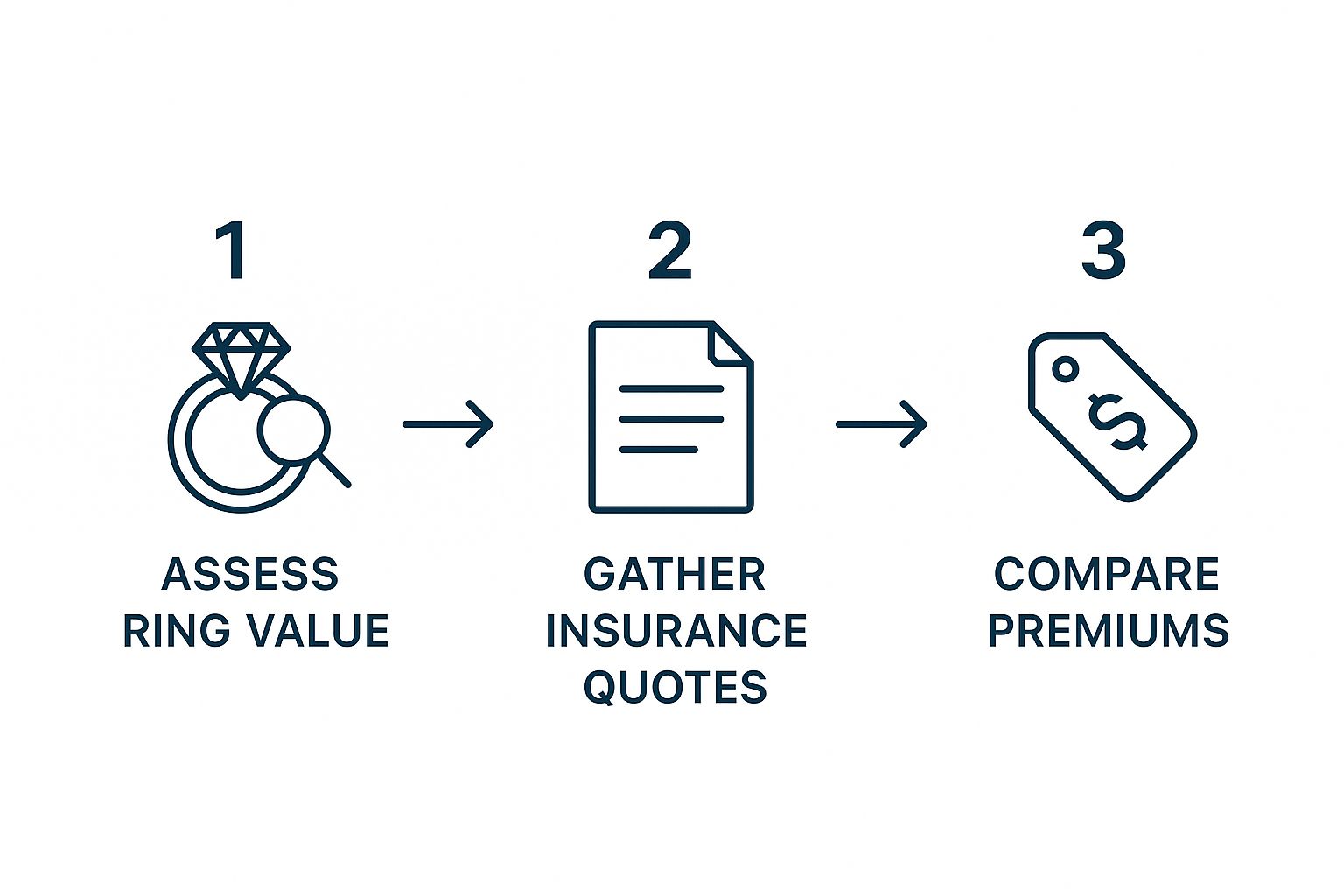
This visual guide shows the essential process of assessing value, comparing policies and ultimately securing the right protection for such a meaningful item.
The Hidden Cost of Claiming on Your Home Policy
Here is something people often overlook. Making a claim for your ring on your home contents policy can have a domino effect. First off, it will almost certainly cause your entire home insurance premium to jump up at renewal time.
Even worse, it wipes out your no-claims bonus. That discount you have carefully built up over years could vanish overnight. A single claim, even for a relatively small amount, can end up costing you far more in the long run across your wider household cover. It is a crucial detail that can turn a simple solution into an expensive mistake.
The real cost of a claim on a home contents policy is not just the excess you pay. It is the subsequent premium hikes and the loss of a no-claims discount that can affect your finances for years to come.
Why a Standalone Specialist Policy Might Be Better
The other option is to go with a standalone policy from a specialist jewellery insurer. Yes, it means another policy and another premium but the cover is designed specifically for high-value, portable items like an engagement ring.
So, what makes a specialist policy different? Let us break it down in a simple comparison.
Home Contents vs Standalone Jewellery Insurance
| Feature | Home Contents Insurance (Specified Item) | Standalone Specialist Insurance |
|---|---|---|
| Cover Scope | Limited to the UK unless you pay for travel extensions. | Often includes worldwide cover as standard. |
| Accidental Damage | Might be an optional extra with limitations. | Usually included, covering things like a chipped stone or bent band. |
| Excess | Can be quite high (£250-£500 is common). | Typically a much lower excess , sometimes as low as £50. |
| Impact of a Claim | Increases your home insurance premium and voids your no-claims discount. | No impact on your separate home insurance policy or its discount. |
| Replacement | Insurers often choose their own preferred jeweller for replacement. | May offer more flexibility or a 'like-for-like' replacement from your original jeweller. |
As you can see, specialist cover is generally far more comprehensive. The worldwide cover is perfect if you travel, accidental damage handles everyday mishaps and a lower excess makes claiming less painful. Most importantly, a claim for your ring will not penalise your main home insurance policy.
Ultimately, the best choice hinges on your ring's value. If it is a more modest piece, adding it to your home insurance could be perfectly fine. But for a more valuable engagement ring, a specialist policy provides peace of mind and protection that is truly fit for purpose, safeguarding both your treasured item and your other insurance policies from unnecessary risk.
How Insurers Calculate Your Premium
Ever wondered how an insurer comes up with the final price for your policy? It can feel a bit like they are trying to solve a puzzle where you only have half the pieces. While the certified value of your ring is the biggest factor, several other real-world details come together to determine what you will actually pay.
It is not just about what the ring is worth. It is about the level of risk the insurer is taking on and that assessment is based on a surprisingly personal set of data. Knowing what they look for will help you walk into the quotation process with your eyes wide open.
The Main Factors Influencing Your Quote
Insurers do not just pull a number out of thin air. They use a specific set of criteria to calculate your premium, focusing on both the ring itself and its owner.
Here is what they will almost always look at:
- The Ring’s Value: This is the starting point. The higher the replacement value on your valuation certificate, the higher your premium will naturally be.
- Your Postcode: Unfortunately, where you live matters. Insurers use geographical crime data to assess the risk of theft in your area and premiums can be higher in postcodes with more recorded incidents.
- Your Personal Claims History: This one is crucial. If you have a history of making insurance claims—for anything, not just jewellery—you will be seen as a higher risk.
A previous claim, even if it was for a completely unrelated issue, can result in a ‘loading’ on your premium. This just means the insurer adds a percentage to the base cost to offset the risk they believe you represent.
The True Cost of a Previous Claim
Making a claim is not a 'free pass'. From an insurer's perspective, a past claim is a strong indicator of future behaviour and it directly impacts your quote. For instance, some providers apply an automatic 10% loading to your premium if you have any claims history at all.
To get a deeper understanding of what goes into the final number, you can read more about engagement ring insurance cost.
This practice is not meant to be punitive; it is just a statistical reality for the industry. It is also why having a clean claims history is one of your best assets for securing an affordable policy.
For an idea of real-world costs, some UK premiums start from as little as £109 for 12 months, including tax and fees but this figure is heavily influenced by personal factors like your postcode and claims record.
The integrity of the insurance system relies on balancing risk. A loading on a premium reflects the increased probability of a future claim, helping to keep the system fair and sustainable for all honest policyholders.
This is exactly why provability and fraud prevention are so important. By accurately verifying what is being insured right from the start, insurers can manage their risk far more effectively. It is a key reason why technology is playing a much bigger part in the industry, helping to cut down on fraud and stabilise costs for everyone. To learn more, check out our guide on the role of technology in reducing insurance claims costs.
By understanding these factors, you can approach getting a quote with a much clearer picture of what to expect.
Why Proving You Own the Ring Is So Important

If you ever need to make a claim for a lost or stolen engagement ring, one of the first questions an insurer will ask is surprisingly simple: can you prove you actually owned it? This idea of ‘provability’ is fast becoming a cornerstone of the insurance process here in the UK. And it is not about putting up barriers for honest customers.
The reality is, insurers are having to tighten their procedures to fight back against a sharp rise in fraudulent claims. Insurance fraud is not a victimless crime by any means; it is a costly problem that ends up pushing premiums up for every single policyholder, affecting all of us. By demanding solid proof of ownership, insurers are simply protecting the system and helping keep cover fair and affordable for everyone else.
Build Your Case from Day One
The absolute best time to prepare for a potential claim is the moment that ring is on your finger. Do not wait for something to go wrong. Getting organised from the very beginning will make all the difference if you ever need to use your policy.
You need to assemble an undeniable file of evidence that ties you directly to that specific ring. Think of it as the ring’s personal history file. It should include:
- The Original Purchase Receipt: This is your starting point, establishing the initial transaction.
- A Formal Valuation Document: This is arguably the most critical piece of evidence, detailing the ring’s exact specifications and crucially, its replacement value.
- Clear, Dated Photos: Snap pictures of the ring from every angle. If it has any unique marks or inscriptions, make sure you get close-ups.
- Any Diamond Certificates: Paperwork from bodies like the GIA is essential for proving the characteristics of the main stone.
It is not just about having these documents; you need to keep them somewhere safe but also accessible. My advice? Scan everything and keep digital copies in secure cloud storage as a backup.
Think of your documentation as the ring’s biography. It tells the complete story of its origin, value and ownership, leaving no room for doubt. This drastically strengthens your position if you ever have to make a claim.
Understanding the Role of Fraud Investigation
This growing need for robust proof is a direct response to how sophisticated fraudulent activity has become. As more people seek cover, insurers must be more diligent than ever to keep the market sustainable and protect the wider customer base from the financial fallout of crime.
It is also worth understanding the role of insurance claim investigators in all this. If your paperwork is missing or the details just do not add up, an insurer might bring in specialists to dig deeper. That can delay your claim process significantly. A well-documented file makes their job easy and gets your claim approved much, much faster.
Using Digital Registers for Modern-Day Proof
To make this whole process simpler, modern digital registers offer a secure and incredibly effective way to document your most prized assets. Platforms like Proova, for instance, let you create an unchangeable digital record of your ring. You can upload all your photos and documents to create a timestamped log of ownership. This digital vault then acts as a single source of truth for your insurer.
When you use a service like this, you are not just organising your paperwork. You are creating a verifiable and easily shareable record that completely streamlines the claims process. You can learn more about the tech securing your insured items and see how it helps both policyholders and their insurers. Taking this kind of proactive step is, without a doubt, your best defence against a stressful claims experience down the line.
Common Questions About Insuring Your Ring
Once you start looking into engagement ring insurance, a lot of questions tend to pop up. It is a bit of a minefield and getting clear answers is the only way to make sure you have the right protection when you actually need it. Let us tackle some of the most common queries we hear.
Do I Need to Tell My Insurer If I Take My Ring Abroad?
Yes and this is a big one. Do not just assume you are covered.
Many standard home insurance policies simply will not cover your personal belongings once you leave the UK unless you have specifically added a travel extension. Heading off on your honeymoon without telling them could mean your ring has zero cover while you are away.
Specialist jewellery policies are often better, usually including worldwide cover as standard. Even so, you need to check the small print for any time limits on individual trips. The golden rule? Always give your insurer a heads-up about your travel plans. It is a quick call that confirms your cover is active and prevents a nasty shock if you need to claim.
What Happens If a Replacement for My Ring Cannot Be Found?
This is where the quality of your policy really shows. What happens next depends entirely on the terms to which you signed up. Most insurers will first try to find a replacement of equivalent quality and value, often through their own network of jewellers.
A good policy should always offer a cash settlement if a like-for-like replacement cannot be sourced. This is precisely why having a detailed, professional valuation is so crucial. With high-resolution photos and exact specifications, you give the insurer a clear blueprint to find or recreate your ring accurately.
Can I Insure the Ring Even If My Partner Paid for It?
In most cases, yes. The key concept here is 'insurable interest'. The person who wears and has possession of the ring has that interest, so they can absolutely take out a policy in their own name. It is the regular use and possession that really matters.
That said, being completely transparent with your insurer is always the best policy. If you can, listing both your and your partner’s names on the policy is a smart move. It clears up any confusion about ownership from the get-go and helps make the claims process as smooth as possible. This is especially important if you run into any disputes; you can learn more about what to do if your insurance company might refuse to pay a claim in our guide. A little bit of prep work builds a solid foundation for a successful claim.
Securely documenting your cherished items is the first step towards true peace of mind. With Proova , you can create a verifiable digital record of your engagement ring, making any future insurance claim simple and straightforward. Get started with Proova today.


